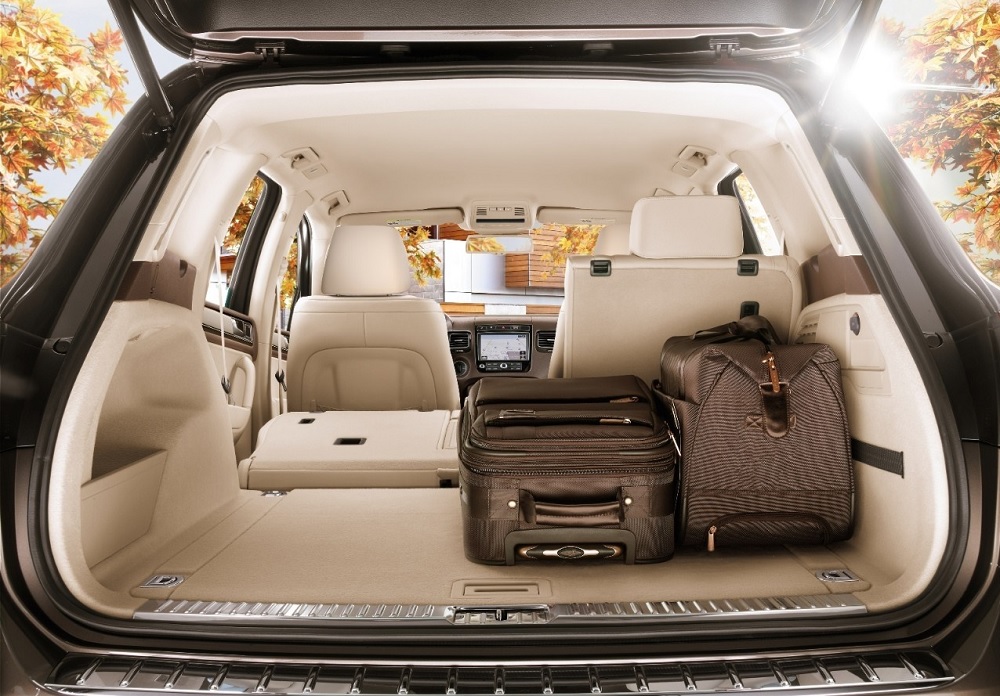Selecting the perfect interior color for your white car is a nuanced decision that extends beyond mere aesthetics; it’s about creating a harmonious and comfortable driving environment that complements the elegance of the exterior. In this extensive guide, we’ll delve deep into the realm of interior colors, exploring the psychological impacts, practical considerations, and personalization tips to help you make an informed and gratifying choice.
Table of Contents
- Understanding the Impact of Interior Colors
- Best Interior Colors for White Cars
- Practical Considerations
- Personalization Tips
- Expert Tips for Choosing the Best Interior Color for Your White Car
- Frequently Asked Questions About Choosing Interior Colors for White Cars
- Are dark interiors suitable for white cars?
- How do I maintain a light-colored interior?
- Will a dark interior make my car hotter in the sun?
- Can I customize the interior color of my white car?
- What impact does interior color have on the resale value?
- Is it advisable to choose trendy colors for the car’s interior?
- How do lighting conditions affect the perception of interior colors?
- What role do accessories play in personalizing the interior?
- Are there interior colors that enhance the feeling of spaciousness?
- Can I consult with professionals for advice on interior color choices?
- Conclusion
Understanding the Impact of Interior Colors
Before delving into specific recommendations, let’s take a moment to understand the profound psychological impact that colors can have on our mood and overall driving experience.
The Psychology of Colors
Colors possess a unique ability to evoke emotions and influence our state of mind. For instance, blue often brings a sense of calmness and serenity, while red can convey energy and passion. When selecting the interior color for your white car, considering the psychological impact of colors helps in creating an ambiance that resonates with your personal preferences and driving style.
Best Interior Colors for White Cars
Now, let’s explore in-depth the top interior color choices that seamlessly complement a white car’s exterior.
1. Elegant Ebony
Why it works: Ebony or black interiors exude sophistication and timeless elegance. The stark contrast with the white exterior creates a sleek and modern look, transforming every drive into a stylish affair. However, it’s essential to note that black interiors may show dust and scratches more prominently.
2. Luxurious Beige
Why it works: Beige interiors bring a touch of luxury and warmth to your white car. This neutral color creates a welcoming atmosphere and is easy to maintain, making it a practical yet stylish choice. Beige also tends to hide dirt better than lighter colors, making it a sensible option for those concerned about cleanliness.
3. Chic Gray
Why it works: Gray interiors strike a balance between classic and contemporary. They complement the pristine white exterior while offering a versatile backdrop for various car accessories and personal touches. Gray interiors are also less likely to show stains, making them a practical choice for families or individuals with a busy lifestyle.
4. Serene Blue
Why it works: Blue interiors evoke a sense of calmness and tranquility. Pairing blue with a white exterior creates a refreshing and visually appealing combination that is both soothing and stylish. Blue is a popular choice for those who want a unique and distinctive interior color without being too bold.
5. Bold Red Accents
Why it works: While an all-red interior might be too intense for some, incorporating red accents can add a bold and energetic flair to your white car’s cabin. Think red seat belts, stitching, or dashboard details. This option allows for personalization without overwhelming the overall interior.
Practical Considerations
Beyond the aesthetics, there are practical considerations that play a crucial role when selecting the interior color for your white car.
6. Maintenance and Cleanliness
Why it matters: Lighter interiors, such as beige, may require more frequent cleaning to maintain their pristine appearance. Consider your lifestyle and how much time you’re willing to dedicate to upkeep. Darker interiors, like black or gray, tend to hide dirt better but may show light-colored debris more prominently.
7. Climate Considerations
Why it matters: Darker interiors can absorb more heat in sunny climates, potentially affecting the overall comfort during drives. Conversely, lighter interiors may feel cooler but might be more prone to fading over time. Consider your local climate and how it may impact your driving experience. (See Also: What Are Alcantara Seats? Benefits, Care Tips, and More)
8. Material Choices
Why it matters: The material of your car’s interior also affects comfort and maintenance. Leather, fabric, and synthetic materials each have their own set of advantages and considerations. Leather, for example, provides a luxurious feel but may require more care and maintenance compared to synthetic materials.
9. Resale Value
Why it matters: Consider how your choice of interior color might impact the resale value of your white car. Neutral colors often have broader appeal in the used car market, potentially making your vehicle more attractive to prospective buyers.
Personalization Tips
10. Customization Options
Why it matters: Many car manufacturers offer customization options for interior colors. Explore these options to personalize your driving space and make it uniquely yours. Whether it’s choosing a custom color or adding personalized details, customization allows you to express your style and individuality.
11. Lighting Effects
Why it matters: The lighting inside your car can significantly influence how the interior color appears. Natural sunlight, ambient lighting, and even LED enhancements can impact the overall ambiance. Consider how different lighting conditions may affect your chosen interior color and whether it aligns with your preferences.
12. Accessorize Smartly
Why it matters: Enhance the interior of your white car by carefully selecting accessories. Seat covers, floor mats, and steering wheel covers can add pops of color and personality to your car’s interior. Opt for accessories that not only complement your chosen interior color but also provide comfort and functionality.
Expert Tips for Choosing the Best Interior Color for Your White Car
When it comes to elevating the overall aesthetic appeal of your white car, the choice of the right interior color plays a pivotal role. In the pursuit of creating a driving environment that is not only visually appealing but also harmonious with the pristine exterior, expert tips become invaluable. Let’s delve deeper into the insights provided by automotive design experts to guide you in making a well-informed decision that aligns with both your personal style and comfort preferences.
1. Consider the Harmony
Achieving a harmonious balance between the exterior and interior colors is essential. While contrast can be visually striking, aim for a color that not only complements the white exterior but also creates a cohesive and elegant overall look. Harmonious color schemes contribute to a sense of unity and sophistication within the vehicle’s design.
2. Balance Boldness
For those inclined towards bolder color choices, consider incorporating them as accents rather than dominating the entire interior. This strategic use of bold colors in specific elements—such as seat trims, dashboard details, or door panels—can add a touch of vibrancy without overwhelming the space. Striking the right balance is key to achieving a harmonious and stylish interior.
3. Think Long-Term
While it’s tempting to follow current design trends, it’s crucial to consider your long-term satisfaction with the chosen interior color. Opting for a timeless color scheme ensures that your vehicle remains stylish and appealing for years to come, resisting the ebb and flow of passing design fads.
4. Test in Various Lighting
Colors can appear differently under various lighting conditions. Before finalizing your interior color choice, obtain samples and observe them in natural sunlight, artificial light, and nighttime conditions. This practical approach ensures that your chosen color maintains its visual appeal in diverse settings, enhancing the overall driving experience.
5. Material Matters
The choice of materials within the car’s interior is as important as the color itself. Different materials, such as leather, fabric, and synthetic options, not only influence the tactile experience but also affect how the color is perceived. Consider comfort, maintenance requirements, and overall durability when making decisions about both color and material.
6. Personalize with Accessories
Injecting personality into your white car’s interior can be achieved through carefully selected accessories. Whether it’s colorful seat covers, stylish floor mats, or a vibrant steering wheel cover, accessories offer an opportunity to experiment with different colors without committing to a permanent change. This approach allows for flexibility and personalization. (See Also: Does Honda Use Real Leather? Unveiling the Truth Behind Honda’s Leather Seating)
7. Climate-Responsive Choices
Tailoring your interior color choice to your local climate is a practical consideration often overlooked. Darker interiors may absorb more heat, impacting comfort in warmer climates, while lighter interiors might provide a cooler feel. Balancing aesthetic preferences with climate responsiveness ensures a well-rounded decision.
8. Embrace Contrast
Creating visual interest through contrast can significantly enhance the overall design of your white car’s interior. If your vehicle has a sleek and modern exterior, consider a darker interior for a bold and contemporary look. Contrast adds depth and character, making the driving experience more visually engaging.
9. Durability Matters
Prioritize durability in your decision-making process, especially if you plan to keep your white car for an extended period. Choose interior materials and colors that can withstand daily wear and tear, ensuring a well-maintained and appealing cabin over the years. Durability is essential for maintaining the vehicle’s resale value and overall aesthetic appeal.
10. Seek Professional Advice
When in doubt, seeking advice from professionals in automotive design or consulting with your car manufacturer’s design experts can provide valuable insights. These professionals can offer guidance on current design trends, color psychology, and practical considerations, empowering you to make a confident and informed decision.
In conclusion, the interior color of your white car is not just a visual statement; it’s a personal expression of style and comfort. By incorporating these expert tips into your decision-making process, you can choose an interior color that not only enhances the visual appeal of your vehicle but also contributes to a delightful and personalized driving experience.
Frequently Asked Questions About Choosing Interior Colors for White Cars
When it comes to selecting the perfect interior color for your white car, numerous questions may arise. From considerations about maintenance to inquiries regarding the impact of climate on color choices, these FAQs aim to provide comprehensive answers to guide you through the decision-making process.
Are dark interiors suitable for white cars?
Answer: Yes, dark interiors, such as black, can be suitable for white cars. They create a sophisticated contrast, giving the vehicle a sleek and modern appearance. However, keep in mind that darker interiors may show dust and scratches more prominently.
How do I maintain a light-colored interior?
Answer: Light-colored interiors, like beige, may require more frequent cleaning to maintain their pristine appearance. Regular vacuuming, stain removal, and the use of appropriate cleaning products can help keep a light interior looking its best.
Will a dark interior make my car hotter in the sun?
Answer: Darker interiors tend to absorb more heat from the sun, potentially making the cabin warmer in sunny climates. Consider this factor if you live in a hot region and prioritize comfort during drives.
Can I customize the interior color of my white car?
Answer: Many car manufacturers offer customization options for interior colors. Check with your manufacturer or explore aftermarket options to personalize your driving space and make it uniquely yours.
What impact does interior color have on the resale value?
Answer: Neutral interior colors often have broader appeal in the used car market, potentially making your white car more attractive to prospective buyers. Consider this when making a long-term decision. (See Also: What Is ActiveX Seating Material? Exploring Innovations in Car Comfort)
Is it advisable to choose trendy colors for the car’s interior?
Answer: While trendy colors may be appealing initially, they can quickly become outdated. It’s often advisable to choose timeless interior colors to ensure long-term satisfaction and maintain the vehicle’s overall resale value.
How do lighting conditions affect the perception of interior colors?
Answer: Lighting conditions, including natural sunlight, artificial light, and nighttime illumination, can impact how interior colors appear. Test color samples in various lighting environments to ensure your chosen color maintains its visual appeal.
What role do accessories play in personalizing the interior?
Answer: Accessories, such as seat covers, floor mats, and steering wheel covers, provide an excellent opportunity to add personal touches and experiment with different colors without committing to a permanent change.
Are there interior colors that enhance the feeling of spaciousness?
Answer: Lighter interior colors, such as beige or gray, can create a sense of openness and spaciousness inside the car. Consider these options if you want to enhance the perception of roominess.
Can I consult with professionals for advice on interior color choices?
Answer: Absolutely. Seeking advice from automotive design professionals or consulting with your car manufacturer’s design experts can provide valuable insights into color trends, psychology, and practical considerations.
In conclusion, choosing the best interior color for your white car involves careful consideration of various factors. These FAQs aim to address common queries and provide guidance to ensure you make an informed decision that aligns with your preferences and enhances your overall driving experience.
Conclusion
In conclusion, the process of selecting the best interior color for your white car is multifaceted, requiring thoughtful consideration of personal preferences, lifestyle, and the ambiance you wish to create. Whether you opt for the timeless elegance of black, the warmth of beige, the versatility of gray, or the distinctive charm of blue or red accents, make a choice that enhances your driving experience and reflects your unique style.
Remember, your car’s interior is not just about colors; it’s about creating a space where you feel comfortable, relaxed, and connected to the road. Take your time exploring the options, considering the practical aspects, and choose the best interior color for your white car to enjoy every journey in style and comfort.


